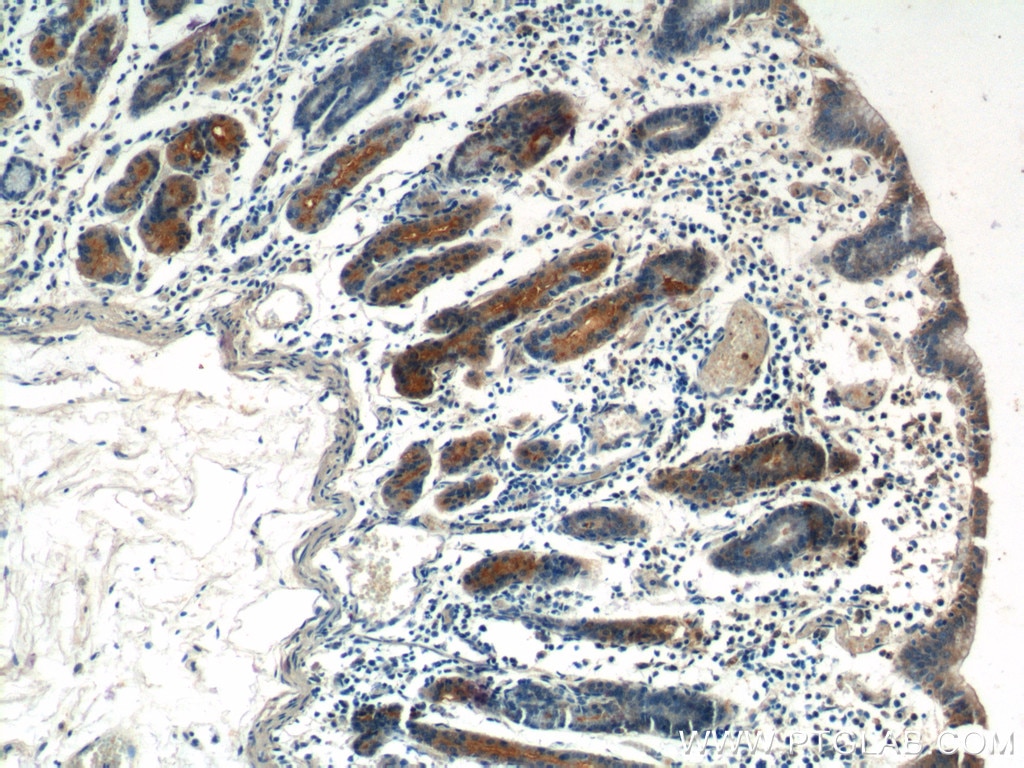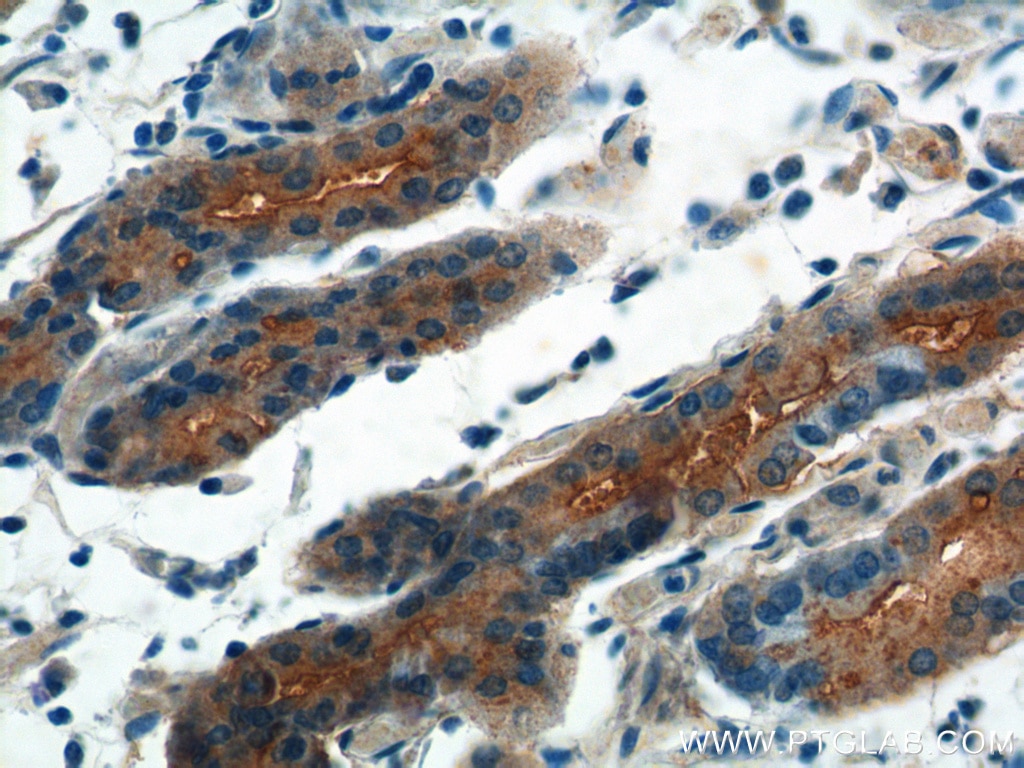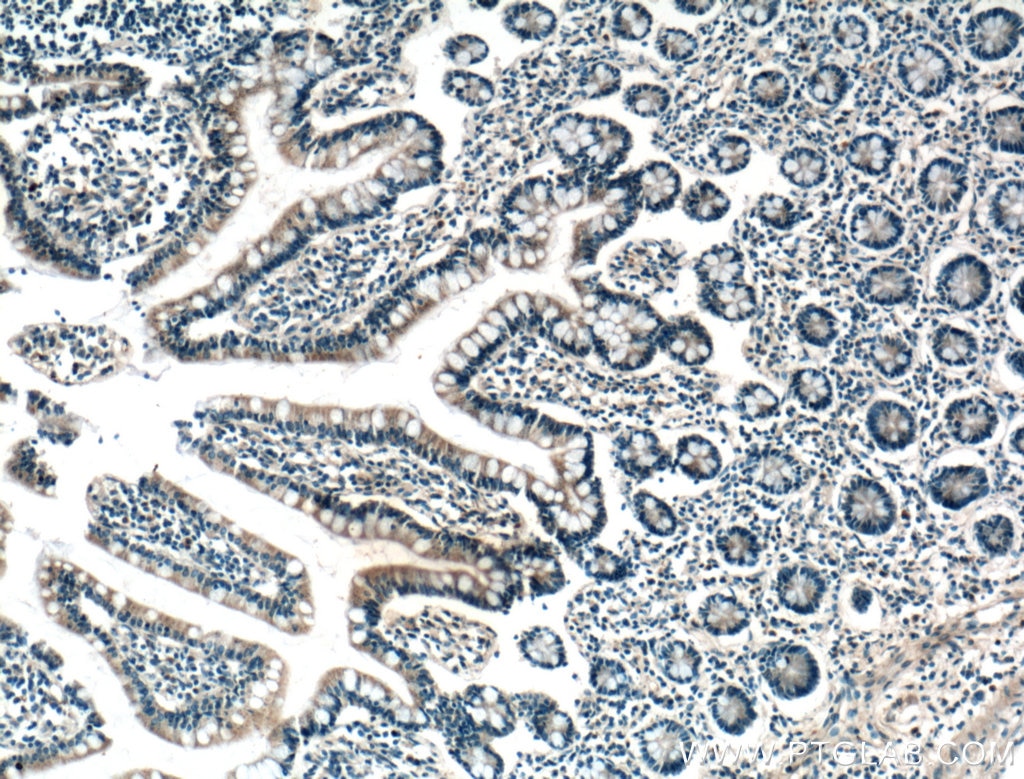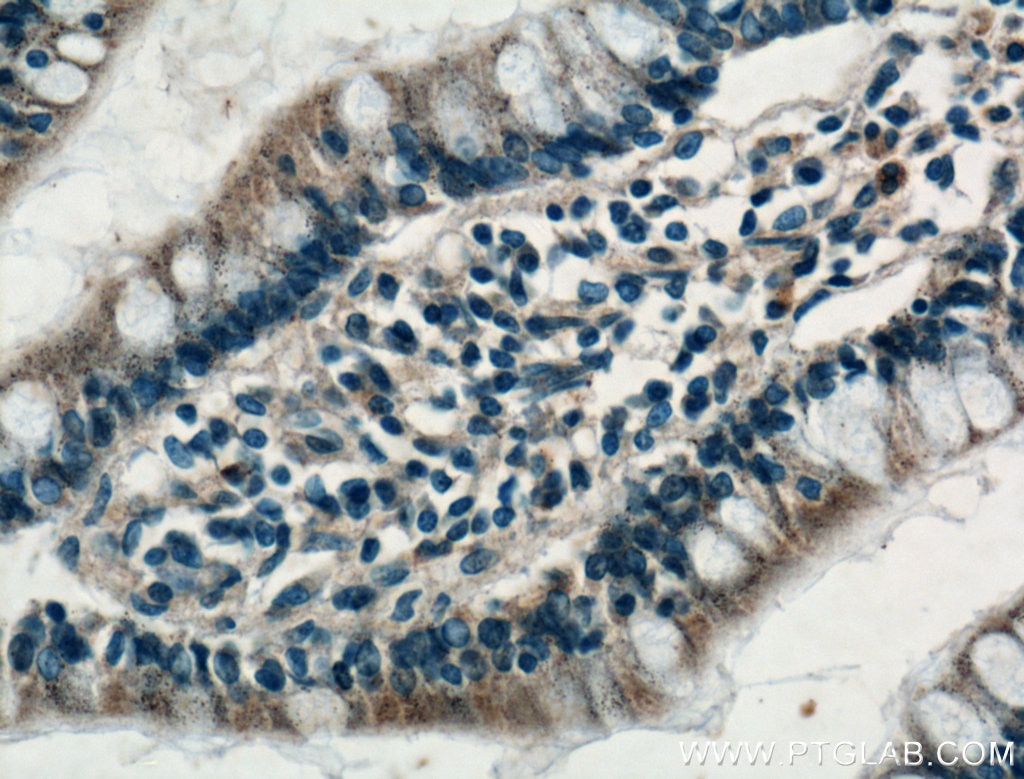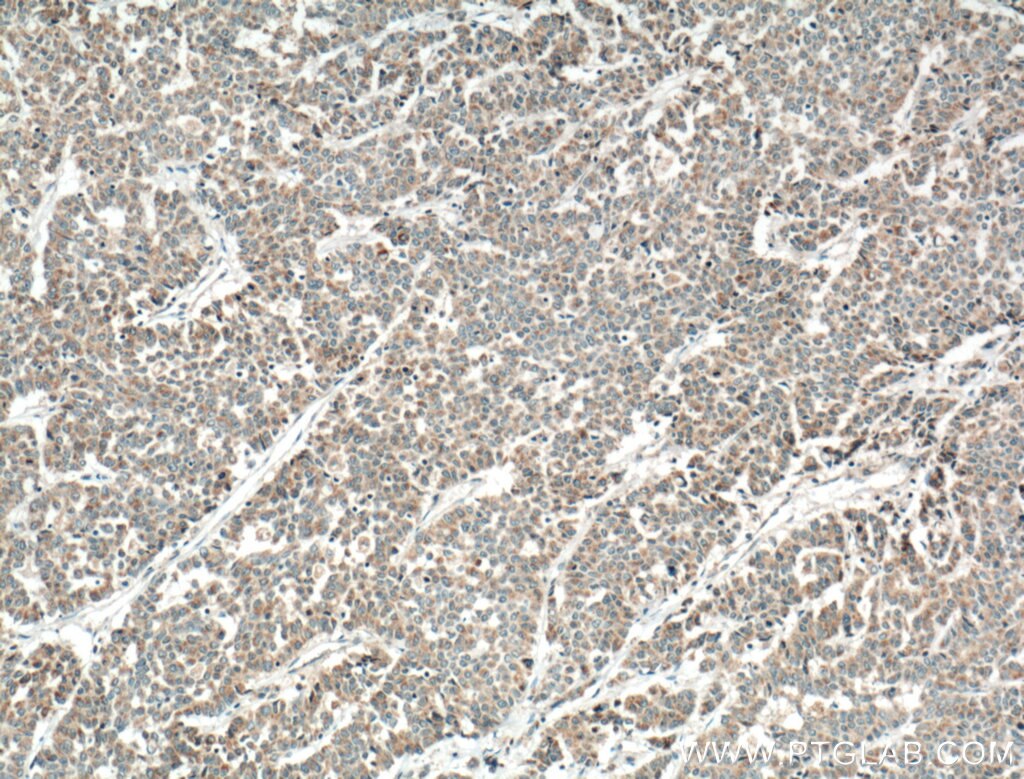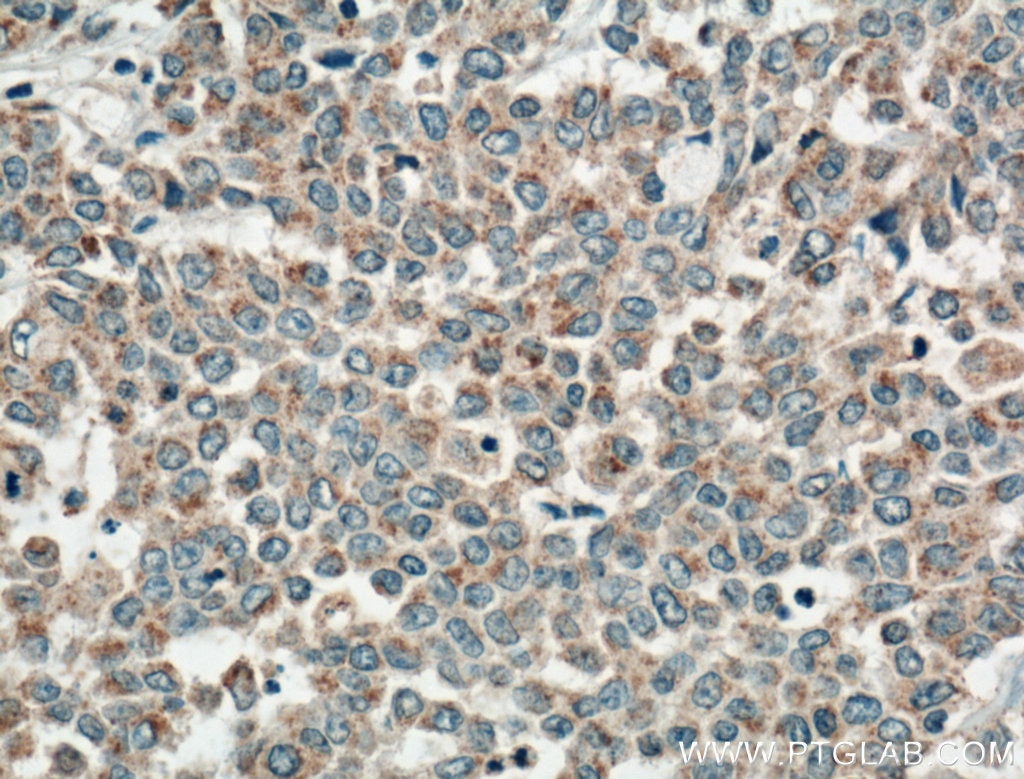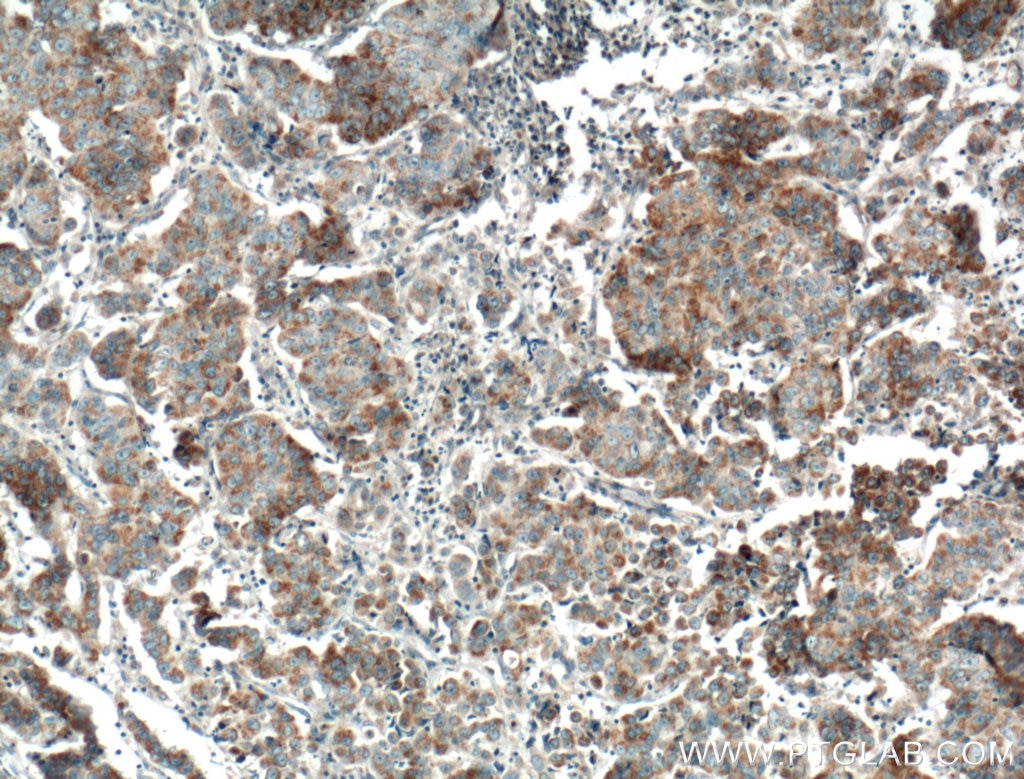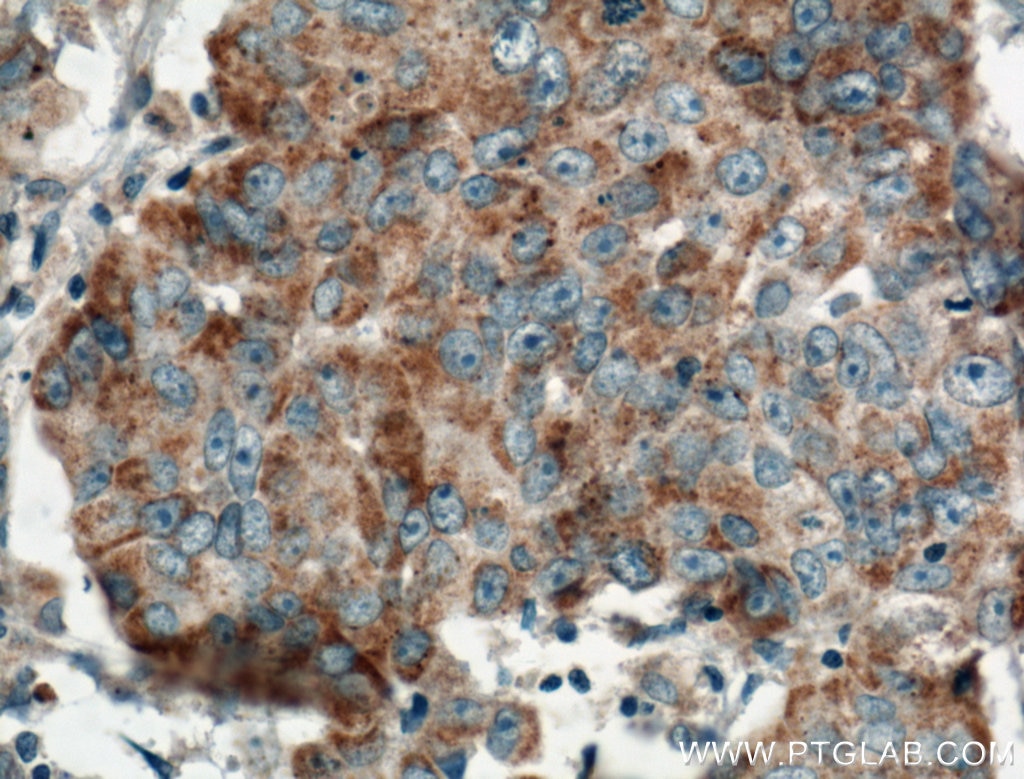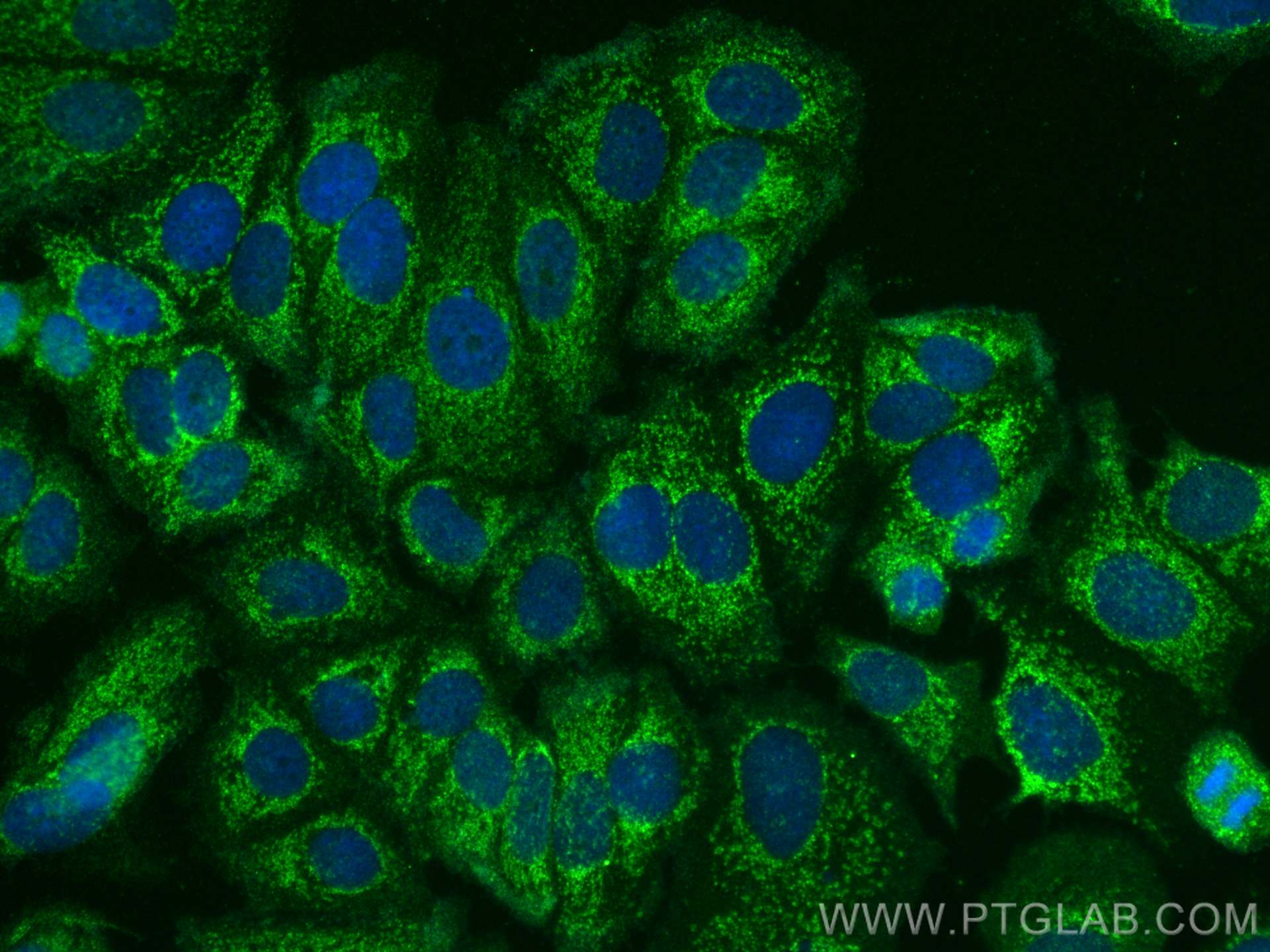Anticorps Polyclonal de lapin anti-FGF9
FGF9 Polyclonal Antibody for IHC, IF/ICC, ELISA
Hôte / Isotype
Lapin / IgG
Réactivité testée
Humain
Applications
IHC, IF/ICC, ELISA
Conjugaison
Non conjugué
N° de cat : 26554-1-AP
Synonymes
Galerie de données de validation
Applications testées
| Résultats positifs en IHC | tissu d'estomac humain, tissu de cancer de la prostate humain, tissu de cancer du côlon humain, tissu d'intestin grêle humain il est suggéré de démasquer l'antigène avec un tampon de TE buffer pH 9.0; (*) À défaut, 'le démasquage de l'antigène peut être 'effectué avec un tampon citrate pH 6,0. |
| Résultats positifs en IF/ICC | cellules MCF-7, |
Dilution recommandée
| Application | Dilution |
|---|---|
| Immunohistochimie (IHC) | IHC : 1:50-1:500 |
| Immunofluorescence (IF)/ICC | IF/ICC : 1:50-1:500 |
| It is recommended that this reagent should be titrated in each testing system to obtain optimal results. | |
| Sample-dependent, check data in validation data gallery | |
Informations sur le produit
26554-1-AP cible FGF9 dans les applications de IHC, IF/ICC, ELISA et montre une réactivité avec des échantillons Humain
| Réactivité | Humain |
| Hôte / Isotype | Lapin / IgG |
| Clonalité | Polyclonal |
| Type | Anticorps |
| Immunogène | FGF9 Protéine recombinante Ag24244 |
| Nom complet | fibroblast growth factor 9 (glia-activating factor) |
| Masse moléculaire calculée | 208 aa, 23 kDa |
| Numéro d’acquisition GenBank | BC069692 |
| Symbole du gène | FGF9 |
| Identification du gène (NCBI) | 2254 |
| Conjugaison | Non conjugué |
| Forme | Liquide |
| Méthode de purification | Purification par affinité contre l'antigène |
| Tampon de stockage | PBS with 0.02% sodium azide and 50% glycerol |
| Conditions de stockage | Stocker à -20°C. Stable pendant un an après l'expédition. L'aliquotage n'est pas nécessaire pour le stockage à -20oC Les 20ul contiennent 0,1% de BSA. |
Informations générales
Fibroblast growth factor 9 (FGF9) is a critically important and elegantly regulated growth factor that was first identified during a screen for factors acting on cells of the central nervous system (CNS). Over the subsequent two decades of research, FGF9 has been revealed to play a significant role in various biological processes. A key feature of its control is reciprocal compartmentalization, particularly during development, with the epithelium serving as a dominant source and mesenchyme as a prime target. This mesenchyme selectivity is achieved through the high affinity of FGF9 to the IIIc isoforms of FGFR1, 2, and 3. FGF9 is widely expressed in the embryo, including in the developing heart and lungs, and more selectively in adult tissues, such as the CNS and kidneys.
Protocole
| Product Specific Protocols | |
|---|---|
| IHC protocol for FGF9 antibody 26554-1-AP | Download protocol |
| IF protocol for FGF9 antibody 26554-1-AP | Download protocol |
| Standard Protocols | |
|---|---|
| Click here to view our Standard Protocols |
